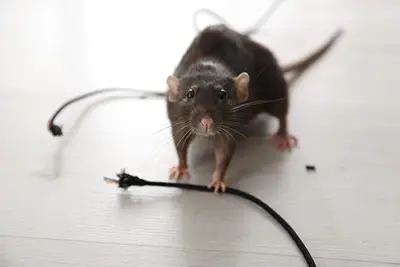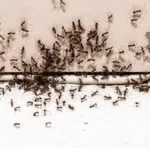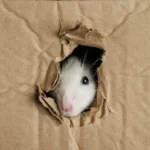
Wherever humans go, rats and mice will follow. We provide easy sources of food, water, and shelter for them to rely on, so they like to set up shop near us whenever they can. By chewing wires or contaminating food, rodents can even become dangerous. They may be small, but that makes them sneaky – they could infest an entire building without its occupants even knowing.
No matter which industry you work in, rodents are bad for business. Professional rodent control from Bug Out can help you get ahead of the problem, whether through preemptive treatment or extermination. In the meantime, here are five things you can do to help prevent an infestation from starting.
1. Seal Gaps and Cracks
One of the strongest ways to prevent a rodent problem is through rodent exclusion. This is the process of sealing up any gaps and cracks in your structure that rodents might squeeze through. Keep in mind, though, that rodents don’t need much space at all; if they can fit their heads through, they can fit the rest of their bodies through – and if they can’t fit their heads through, they’ll gnaw until they can. Rodent teeth are incredibly strong and can even chew through certain metals.
Typical measures like expanding foam sealant won’t work on their own in many situations. For instance, when sealing up the gaps between floor expansion joints, it’s better to use a “sandwich” of high-density foam and stainless steel mesh. Also, remember to check your building’s weather stripping. Door gaps are an extremely convenient way for rodents to enter a building, but if your weather stripping is in good shape, it discourages them. However, it’s also very easy for them to chew through; consider door guards and sweeps for a lower-upkeep option.
2. Keep Landscaping Neat
Whether you run a restaurant or an office building, simply keeping up with landscaping could be a big help in your pest control efforts. Keeping your landscaping in good shape doesn’t just make it more appealing to clients – it actually makes it less appealing to rodents. Trimming trees and shrubs away from the ground reduces rodent harborage – places where rodents can hide.
Leave a six-foot gap between landscaping elements and your building. This makes sure rodents don’t have easy cover and may take their business somewhere else. Raking leaves also removes harborage – for rodents as well as other pests.
3. Inspect Incoming Shipments
In shipping and manufacturing, it’s important to thoroughly inspect incoming shipments for signs of rodents. Even a single rodent could bring in a full-blown infestation very quickly.
Here are a few signs that mice or rats could be stowed away in your next shipment:
- Biting and chewing marks. Rodents have to chew almost constantly to keep their teeth from overgrowing. They don’t care if your shipment is edible or not, either. They’ll gnaw their way in regardless.
- Droppings. Self-explanatory.
- Spilled items or food. When rodents chew through packaging, spills are likely – especially for small items or ingredients.
Rodents are great survivors; they don’t need much food or water to live, so they’re right at home on a shipping pallet. That’s why it’s so important to check over any incoming shipments before you add them to your inventory. You never know when a rodent hitchhiker might be aboard!
4. Secure Garbage Areas
Rodents aren’t picky; they’ll gladly eat whatever they can get their claws on, including garbage. An outdoor trash container can provide everything a rodent needs – food, water, and shelter – all at once. And since people don’t like to spend time around garbage, they’re relatively peaceful places for rodents to settle.
The simplest way to keep rodents out of your garbage is to keep a tight lid on your receptacles. A tight-fitting lid with a lock can do a lot to deter rodents from squeezing into your garbage. Don’t forget the recycling, either – rodents will use paper, plastic, cardboard, and many other recyclable materials to build nests.
Last but not least, pick up any litter and make sure all your garbage makes it into the dumpster.
5. Monitoring Traps and Professional Inspections
Pest-monitoring traps can be a great way to keep an eye on pests in and around your building. Place them in areas where rodents have been spotted, or in areas with a high potential for rodent infestation – such as outdoor break areas, shipping/receiving areas, parking lots, and garbage areas.
And, of course, it’s always a good idea to have a professional on hand to help you. Even if you don’t think your building has a rodent infestation, there’s always the potential for one to start up without you knowing it. Rodents can live almost silently in ceiling and wall voids, attics and crawlspaces, and even sub-slab areas. With a comprehensive inspection from Bug Out, you could catch the early signs of infestation before they get out of control.
Call the Bug Out Team for Rodent Control Services
If your business is facing a rodent problem, call on the Bug Out team for help. We’ve been helping the St. Louis area since 1963 and we want to bring you the peace of mind you deserve. No pests are safe from our team!
Give us a call to get started with a free quote!





